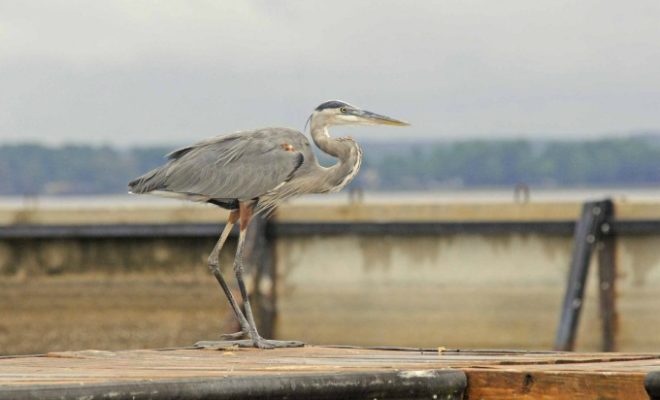When you think of the tall, gangly, fish-eating Great Blue Heron, you probably think of them as living exclusively on the coast or in the swampy marshes of east Texas. Did you know that the Great Blue Heron can actually be spotted all over Texas? The Great Blue Heron is abundant, widespread, and well-known throughout its range in Texas, but its existence was threatened in the late 1800’s.
Nature
Are There Great Blue Herons in the Texas Hill Country?
Populations Threatened by the Hat-Making Industry

Photo: Flickr/C Watts
From about 1860 until 1907, the Great Blue Heron’s breeding plumes, as well as those of Snowy Egrets and Great Egrets, were in demand in the millinery trade where they were used to adorn women’s hats. There are reports of Great Blue Heron plume collecting on the Texas coast in Corpus Christi area and Refugio County during this time. However, their populations were not decimated as were those of the egrets.
A Long-Legged Wader

Photo: Flickr/Edlyn B
The Great Blue Heron is a large bird, with a total length (body and tail) of just over 50 inches. The wingspan can approach 80 inches, making this species one of this state’s largest birds. Great blue herons are strictly carnivorous, feeding primarily on fish, although other vertebrate animals such as aquatic snakes, turtles, frogs, and mice are opportunistically preyed upon. This “long-legged wader” employs a few strategies when hunting prey. The most used strategy consists of the bird just standing still in the shallow water for long periods of time, allowing prey to familiarize themselves with it and even get comfortable with its presence. It then waits for the right moment to capitalize on its prey’s complacency, grabbing its food with a lightning-quick jab of its stout bill.
Found All Over the State

Photo: Facebook/Enchanted Rock State Natural Area – Texas Parks and Wildlife
While the Great Blue Heron doesn’t venture too far from large bodies of water, they can be found in all areas of Texas. So, if there’s a river, lake or even a creek nearby, you might see these statuesque birds foraging for food. In fact, these birds are sometimes unwelcome visitors to yards that include fish ponds. A length of drain pipe placed in the pond can provide fish with a place to hide from feeding herons. Herons, like most of our birds, are legally protected by the Migratory Bird Treaty Act.


